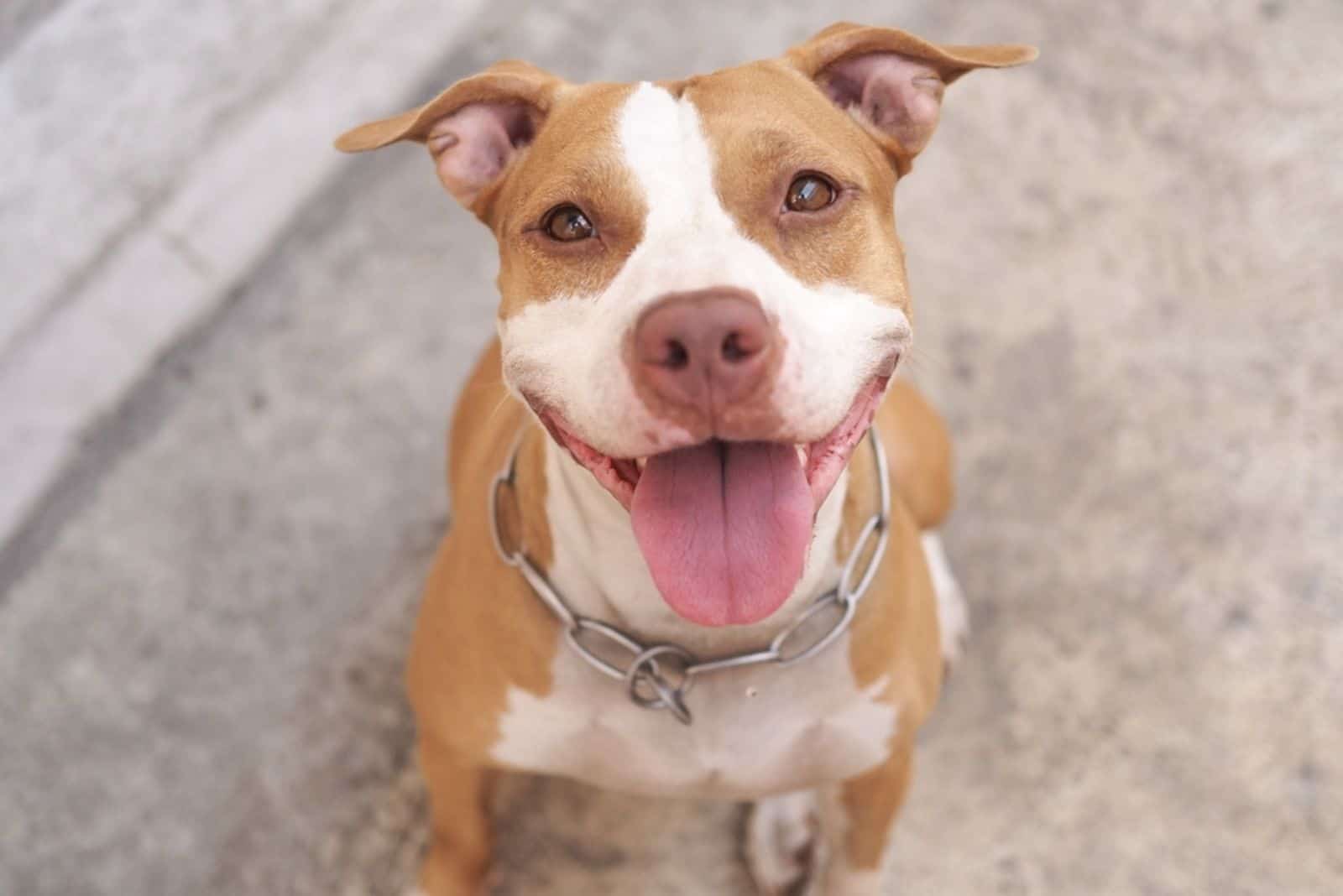If you’ve clicked on this article, then you are probably looking for an answer to the question “why is my Pitbull so small?” Well, the answer isn’t exactly straightforward, but we will cover several possible causes here.
The Pitbull is one of the most popular and beloved dogs in the United States, and the world in general. Its trademark muscular build, strong bone structure, and instantly recognizable face are just a couple of its appealing characteristics.
As a dog owner, you want to know as much as possible about your pup, in order to be in the position to provide the best possible care. One of the things that Pitbull owners sometimes wonder about is the size of their dogs.
So, why is my Pitbull so small? We hear you asking. There are multiple factors that ultimately impact the size of any dog breed, whether they’re 6 months old or 6 years old.
We will discuss how some of those might result in your Pitbull being smaller than you thought it would be.
Why Is My Pitbull So Small?
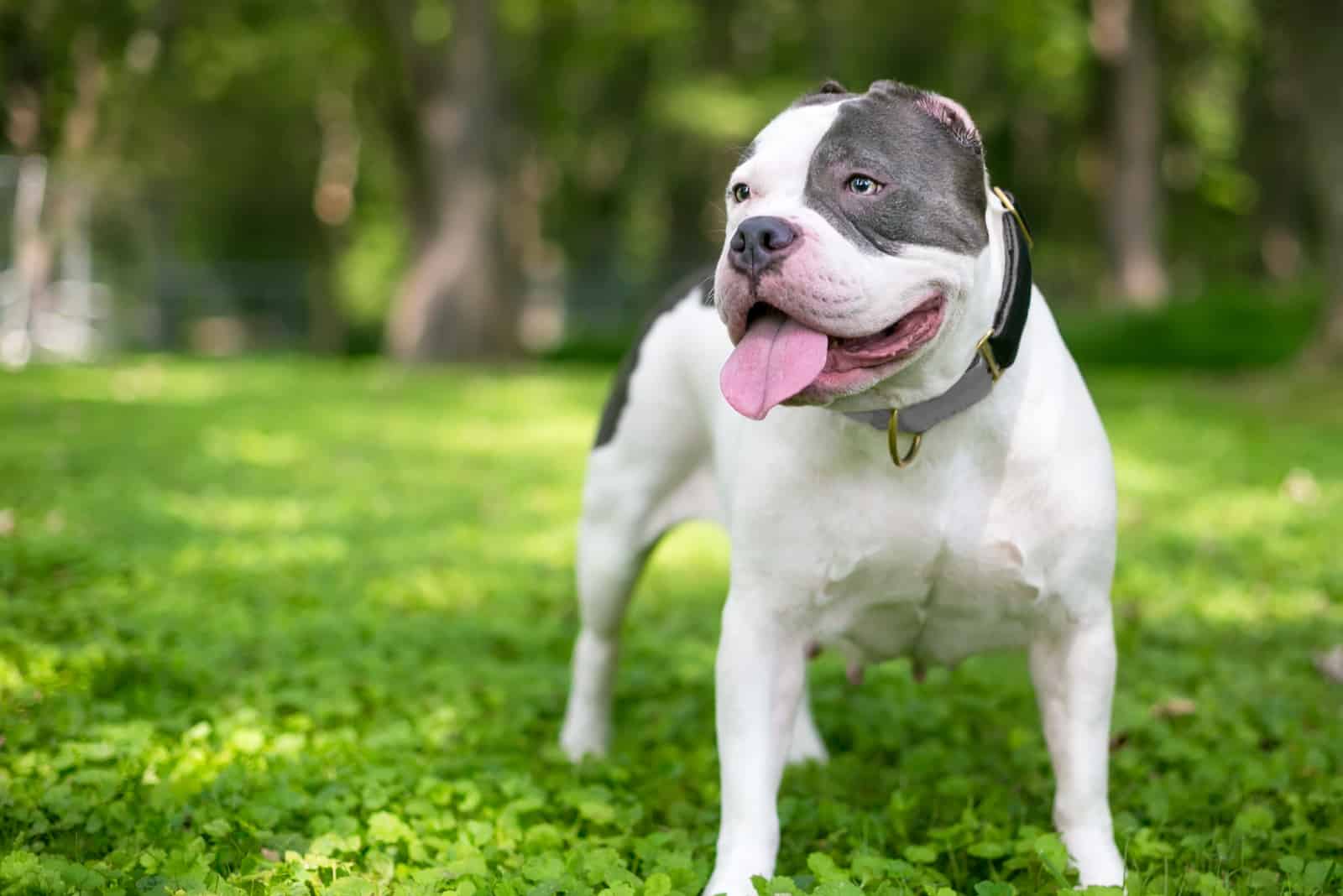
If you’re worried about your Pitbull’s development or think your dog is smaller than other canines its age, you should know that the growth rate of your Pitbull often depends on a number of variables.
The genetic makeup of the dog is the primary factor influencing a Pitbull’s rate of growth. Pitbulls come in different varieties, and their sizes can change depending on their gender, age, and type.
The diet of your dog is another element that impacts growth pace. The type and quantity of calories your dog consumes greatly influences how big it will end up being.
Additionally, things like chronic health issues and physical injuries can also impede your Pitbull’s growth and therefore result in a dog that is smaller than average.
This was a brief overview of some of the potential causes, but in the following sections of the article, we will dig a bit deeper into each of them and explain how exactly they influence the growth of a Pitbull puppy.
6 Possible Causes For Small Pitbulls
Listed below are the six possible causes that might answer your question: Why is my Pitbull so small?
These six items are all factors in the growth and development of any dog, and therefore they have an impact on its adult size. If there is a problem with any of them, your Pitbull could end up being smaller than other similar dogs of the same age.
Before we go any further, it’s important to note that Pitbull is not an official purebred dog recognized by the American Kennel Club, and therefore it doesn’t have a strict set of breed standards when it comes to size.
That’s another reason why it might be tricky to determine what is a good size for your Pitbull and whether or not it’s too small for its age.
Furthermore, there is also the teacup version, which is extra small so it can create even more confusion.
1. Genetics
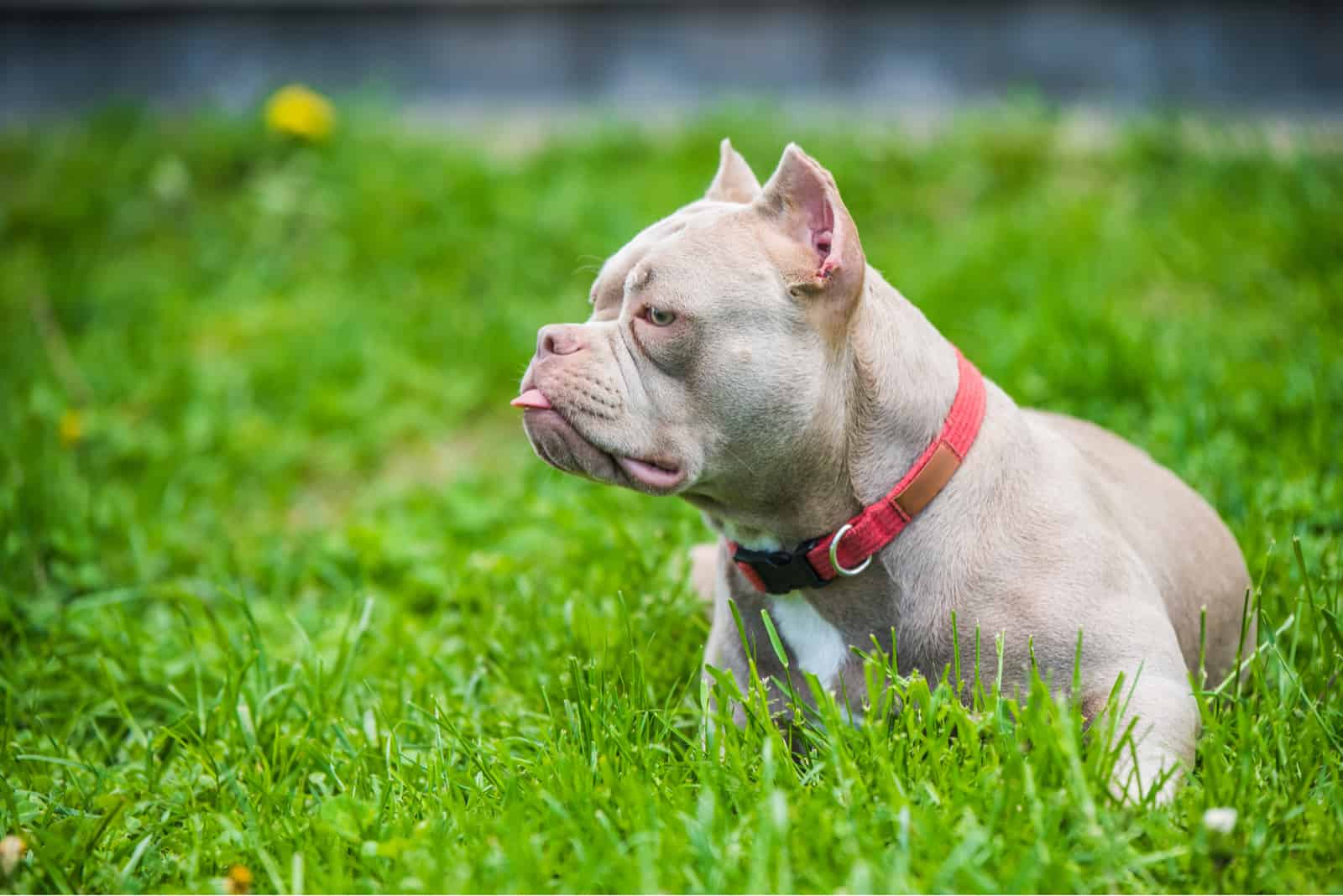
The genetic makeup plays a major role in determining a Pitbull’s size. The size of a Pitbull can be influenced by the genes inherited from its parents, as well as any genetic variations that may be present.
Some Pitbulls may have genes that make them more prone to be smaller, while others may have genes that make them more likely to be larger.
Additionally, the presence of certain genetic conditions or mutations can also affect a Pitbull’s size and make it smaller in comparison.
When buying a Pitbull puppy from a breeder, make sure to ask them for all associated paperwork that covers the pup’s bloodline and genetics.
Knowing everything that you possibly can about your new dog’s background can help you predict how it will develop and prepare for what’s to come.
2. Gender
Gender can play a role in determining the size of a Pitbull
As we said, there is no specific size standard for the breed, but, on average, adult male Pitbulls tend to be larger and heavier than adult female Pitbulls.
Adult male Pitbulls typically weigh between 35 to 60 pounds and can reach a height of 18 to 21 inches at the shoulder. Adult female Pitbulls, on the other hand, typically weigh between 30 to 50 pounds and can reach a height of 17 to 20 inches at the shoulder.
3. Poor Nutrition
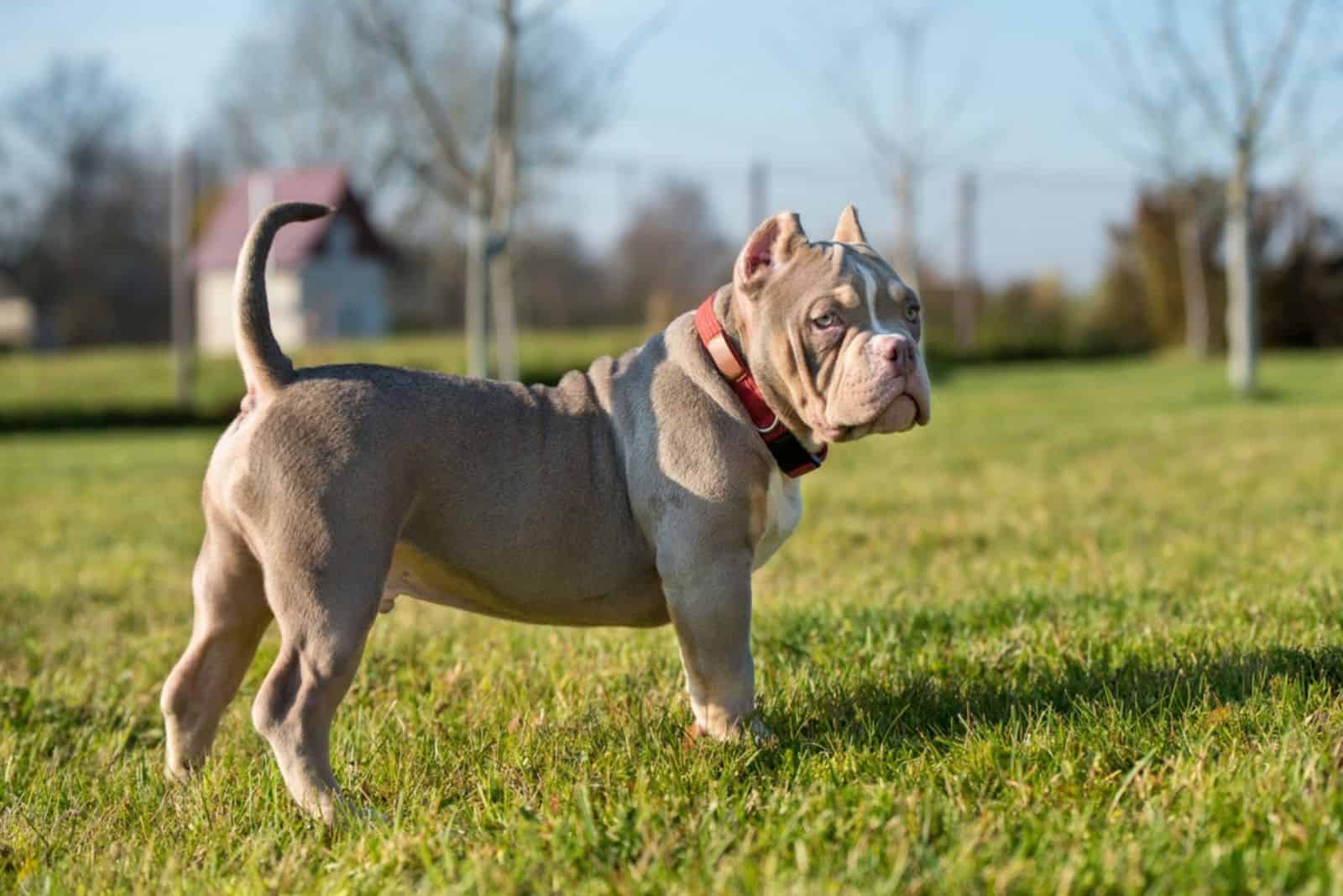
Nutrition can play a significant role in determining the size of a Pitbull. A lack of proper nutrition during growth and development can cause a Pitbull to be smaller than it would be if it were receiving the appropriate amount and type of nutrients.
For example, if a Pitbull puppy is not getting enough calories or protein, its growth may be stunted, causing it to be smaller.
Additionally, certain medical conditions or parasites can cause malabsorption of nutrients, leading to poor growth and smaller size.
It’s important to feed your Pitbull a high-quality diet that is appropriate for their age, size, and activity level, and consult with a veterinarian or a professional nutritionist for a proper feeding plan.
Related: 8 Best Dog Food For Pitbulls: Our Top Favorites And More
4. Health Issues
Health issues can cause a Pitbull to be smaller in size by affecting its growth plates. Some health conditions that can cause a Pitbull to be smaller include hormonal imbalances, infections, nutritional deficiencies, and genetic conditions.
Hormonal conditions such as hypothyroidism or growth hormone deficiency can affect a Pittie’s growth and cause it to be smaller than other Pitbulls.
Also, certain infections such as parvovirus, fleas, and hookworms, can interfere with a Pitbull’s growth and development, causing it to have weight issues.
Speaking of weight issues, there are nutritional deficiencies caused by the malabsorption of nutrients or lack of proper nutrition that can affect a Pitbull’s growth.
These conditions can not only affect the muscular mass of a Pitbull but also cause it to have a slighter frame than its peers.
And finally, there are also some genetic conditions that can affect a Pitbull’s growth basically from the moment it is born.
It’s important to consult with a veterinarian if you notice any signs of a health issue in your Pitbull, as early diagnosis and treatment can help prevent or mitigate any impact on their growth and size.
Regular check-ups, vaccinations, and parasite control are also important to maintain their health.
5. Physical Injury
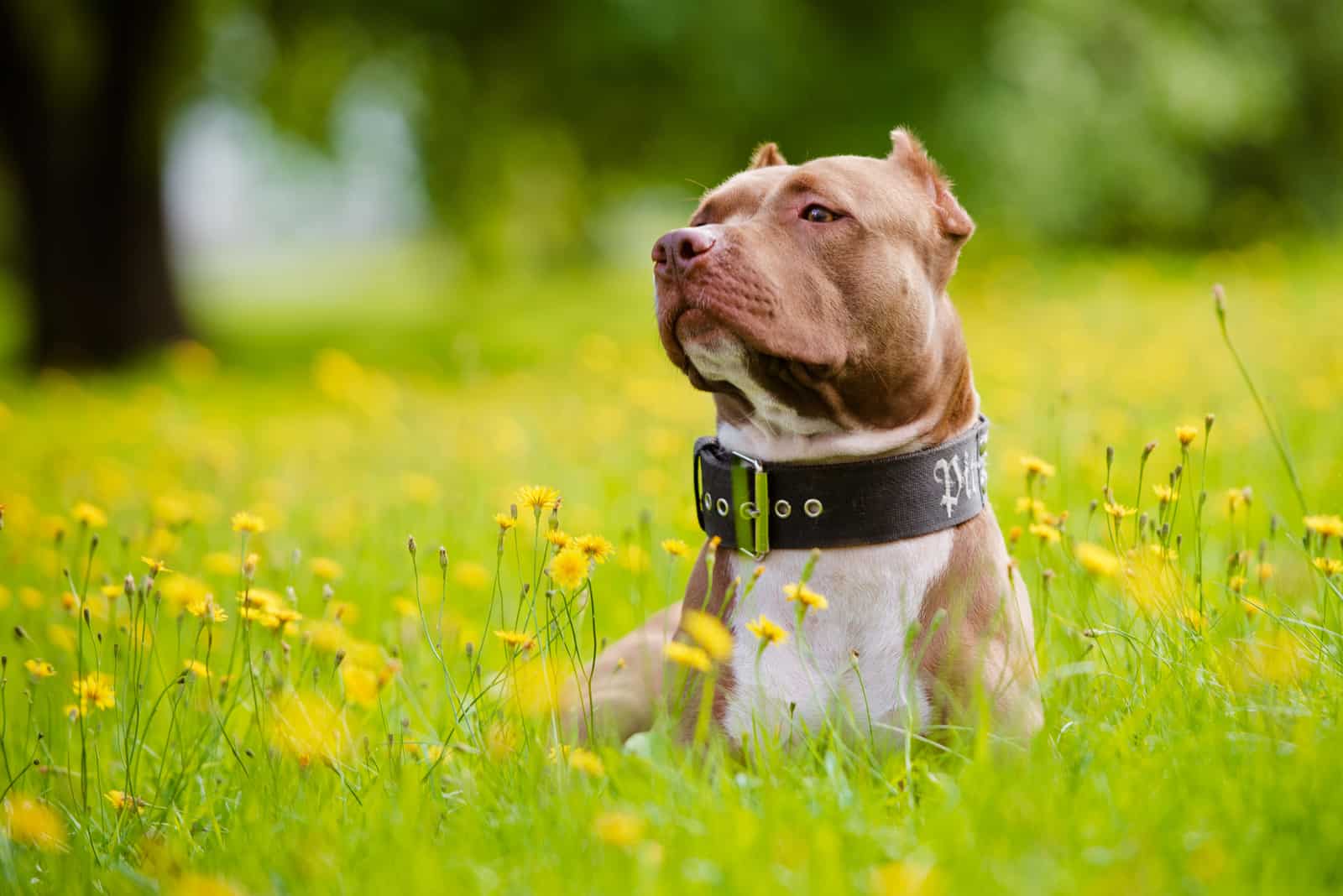
Similar to health conditions, physical injuries can cause a Pitbull to be smaller in size by affecting its growth and development. Below are some examples.
If a Pitbull suffers a bone fracture, it may not heal properly and can affect their growth.
Trauma to a growing Pitbull, such as head injury or spinal cord injury can affect its growth and development, causing them to be smaller.
Injuries to soft tissue such as ligaments, muscles, or tendons can cause a Pitbull to be smaller, as it can limit its physical activity and impede its development.
Physical injuries, particularly if not treated promptly and properly, can have a long-term impact on a Pitbull’s growth and size.
It’s important to seek veterinary attention immediately if you suspect your Pitbull has suffered an injury, and to follow the veterinarian’s instructions for treatment and rehabilitation to prevent further damage and to optimize recovery.
6. Type Of Pitbull
We have already mentioned in this post that Pitbull isn’t exactly an AKC-recognized breed. But it’s actually much more complex than that.
A lot of people don’t actually know that the term “pitbull” is, in fact, a catch-all used to describe a number of different bully breeds.
That’s why there isn’t a single set of breed standards — there simply isn’t a single Pitbull breed.
However, knowing which type of Pitbull you have can help you know what to expect in terms of its size.
It is generally considered that there are four distinct types of Pitbull breeds: American Pit Bull Terriers, American Staffordshire Terriers, American Bullies, and Staffordshire Bull Terriers.
If you are unsure which type of Pitbull you own, the best way of finding out is by conducting a DNA test.
American Pit Bull Terrier
The United Kennel Club recognizes the American Pit Bull Terrier (APBT) as its own breed, but the AKC doesn’t. Its forebears were British Bulldogs and Terriers from the 19th century, and the breed developed in North America in the late 19th century.
Most of them were originally bred for fighting, which is the reason behind their tremendous bite force, but also behind their unfortunate bad reputation.
One of the most common subtypes of the APBT is the so-called red-nose one, but they can come in a variety of coat colors and patterns, including brindle.
Modern American Pit Bull Terriers typically grow up to be 17 to 20 inches tall, with their weight usually settling between 30 and 65 pounds once they reach adulthood.
American Staffordshire Terrier
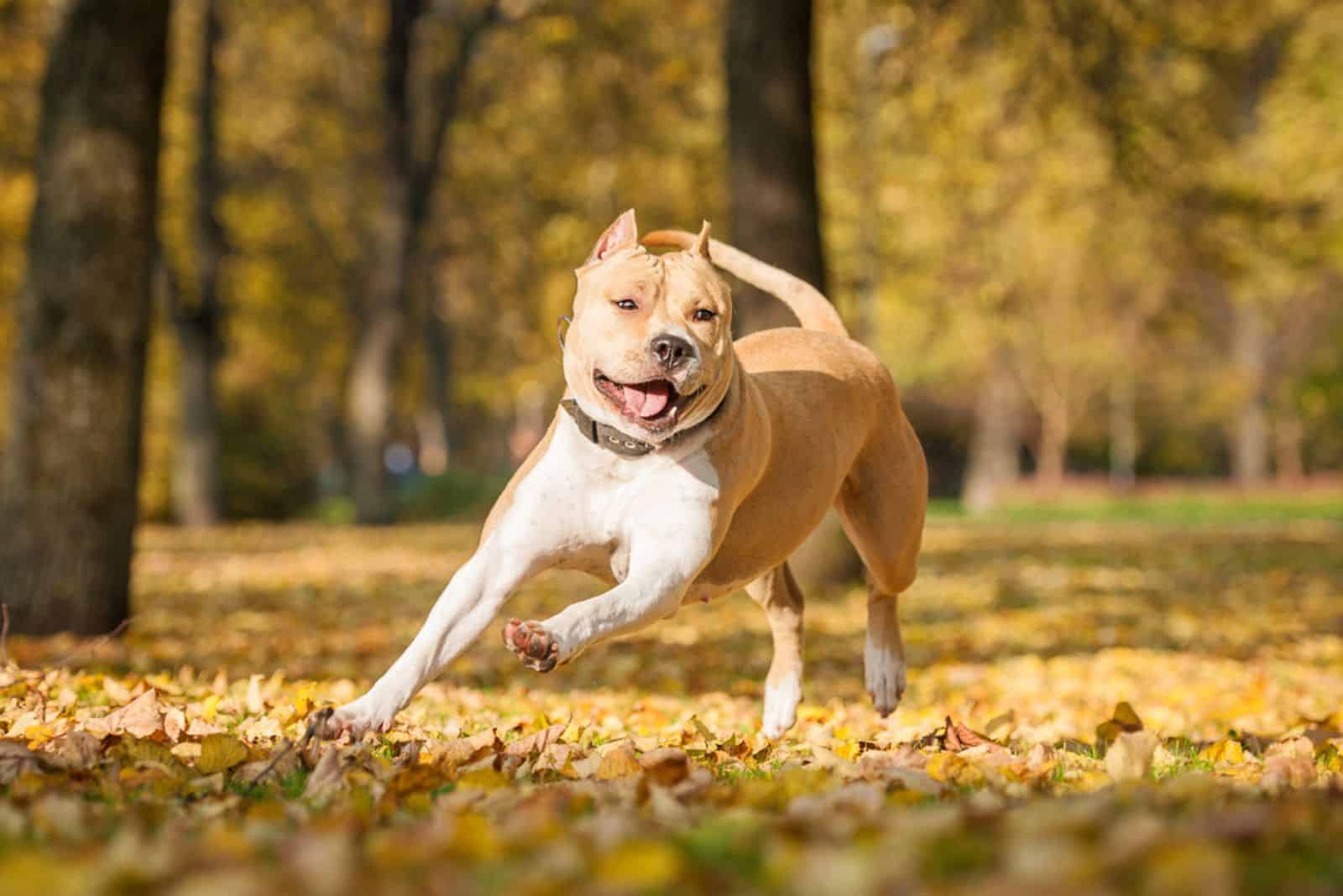
Just like the APBT, the American Staffordshire Terrier also hails from the Terrier and Bulldog breeds of 19th-century England. It evolved into a larger dog than its English ancestors in late 19th-century North America.
In terms of size, you will notice that they are somewhat stockier and more muscular than APBTs. Their average adult height is around 17 to 20 inches, and average weight is in the range of 50 to 80 pounds.
So, as you can see, they have similar frames to American Pit Bull Terriers, but they are significantly heavier on average. But that’s all muscle!
American Bully
A relatively recent dog breed, the American Bully was originally bred in the United States in the 1980s and 1990s, but it has not yet been officially accepted into the American Kennel Club.
The breed originated from the American Pit Bull Terrier and other Bulldog-like breeds, but it has a bigger skull and a significantly broader body frame than its closest cousins.
Hence the noticeably larger weight (65 to 85 pounds) and a much wider range of possible heights (13 to 20 inches).
As you can see, this is the biggest (or at least, the heaviest) Pitbull breed that we’ve mentioned so far. It’s not exactly a Mastiff, but it’s not a Chihuahua either.
Staffordshire Bull Terrier
Even though the Staffordshire Bull Terrier was initially developed in the 1800s specifically for dogfighting, it is not the biggest Pitbull breed of the five that we are listing here.
In fact, it is actually the smallest, but they make up for it with a range of gorgeous colors!
With a height of “only” 14 to 16 inches and weight of 24 to 38 pounds, these dogs are closer in size to Beagles than Bulldogs, but they had the agility that proved to be a massive advantage in the arena.
Thankfully, those sadistic traditions are now in the past, and these wonderful dogs are now treated as friendly and lovable companions.
Pitbull Growth And Development
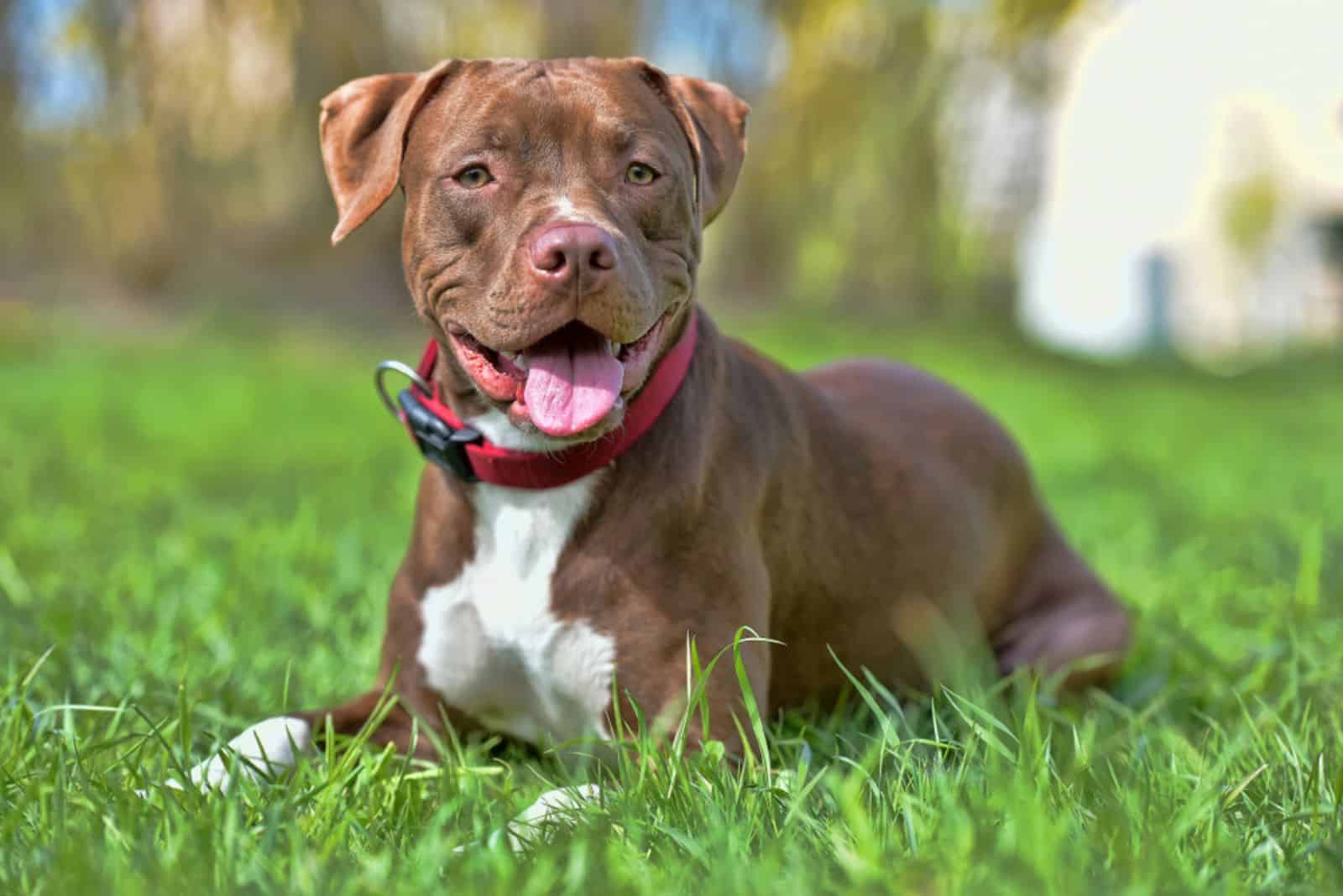
Okay, so those were the six most common reasons for Pitbulls being smaller than you would expect them to be.
Now that we’ve gotten that out of the way, we can turn our focus toward answering a couple of frequent questions that dog owners have in regard to the growth and development of their Pitbulls.
How Big Is My Pitbull Supposed To Be?
Once again, there isn’t a single standard size that works for all Pitbulls, as that’s actually an umbrella term that refers to a number of different types of dogs.
Depending on the type of Pitbull you have, it can grow anywhere between 14 and 28 inches, and weigh around 24 to 120 pounds.
If you would like a more precise prediction, then scroll back up to the part where we talk about different types of Pitbulls and find the one that you have. And if you think that your Pittie is overweight, then check out this article for some guidance.
When Will My Pitbull Be Fully Grown?
Most Pitbull dogs are medium-sized, and those typically fully grow into their adult bodies by the end of the first year of their lives.
However, the bigger ones, such as the American Bulldog, might take a little more — up to 18 months.
Of course, even within the same breed, each individual dog has its own growth rate, and you can’t expect to predict it within a week or even a month. All you can do is make sure to provide everything that your Pitbull puppy needs for healthy development.
This includes everything from proper nutrition and exercise regime to lots of playtime, cuddles, and careful socialization starting from those early stages of puppyhood. Just bear in mind, Pitbulls can often get clingy, so make sure to set some boundaries.
Conclusion
Many pet owners may ask themselves “why is my Pitbull so small?” when they notice that their dog is smaller than average.
The answer to this question can be complex, as there can be several potential causes. Genetics, nutrition, health issues, physical injuries and environmental factors all play a role in determining a Pitbull’s size.
It is important to consult with a veterinarian to rule out any health issues and to ensure that your Pitbull is receiving a balanced diet and proper care.
Additionally, keep in mind that Pitbull is a term used to describe multiple breeds and there is no unique size standard. In any case, big or small, a Pitbull puppy is definitely going to be a beloved family member.
